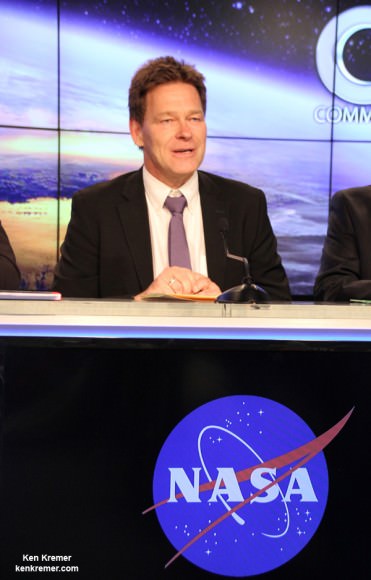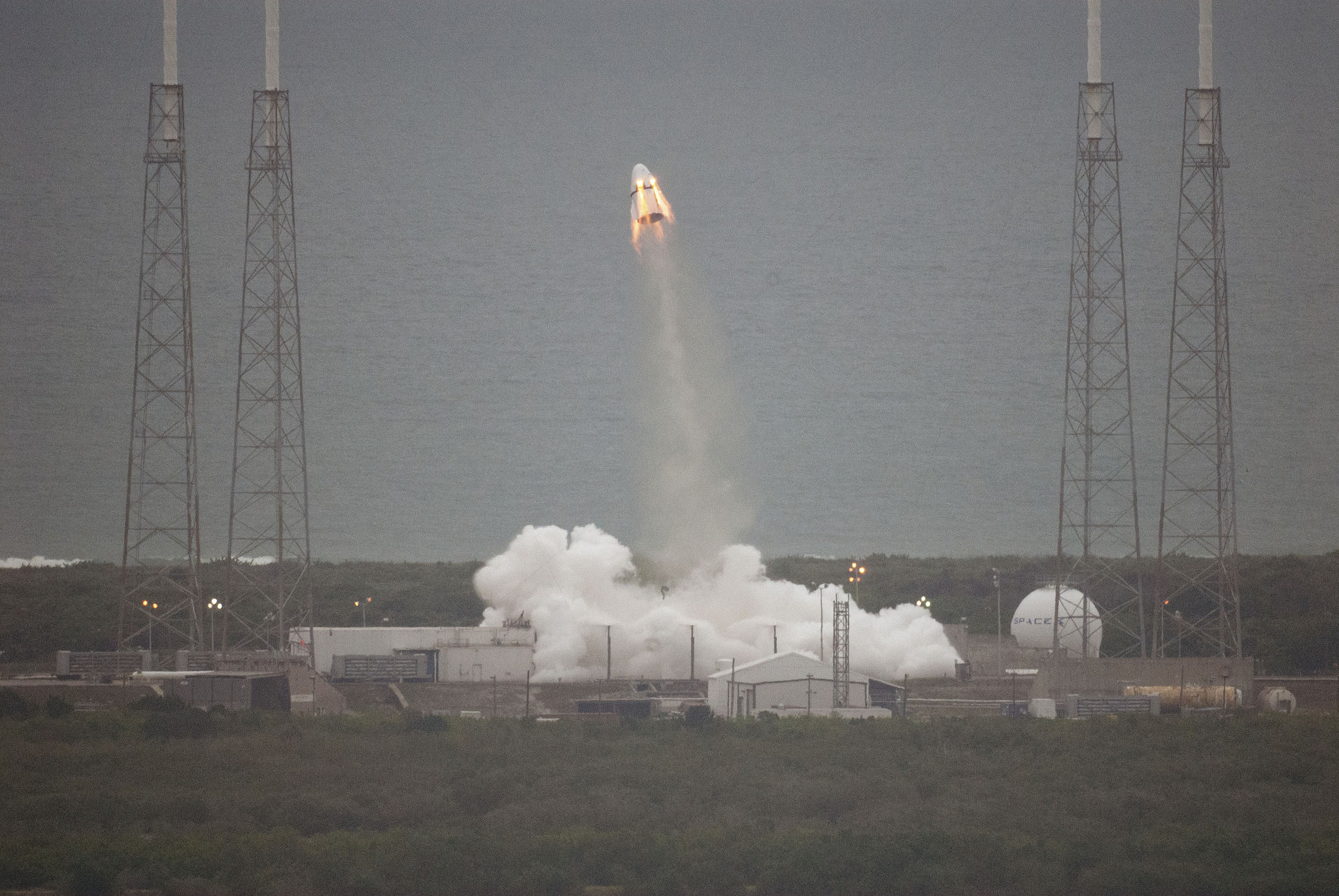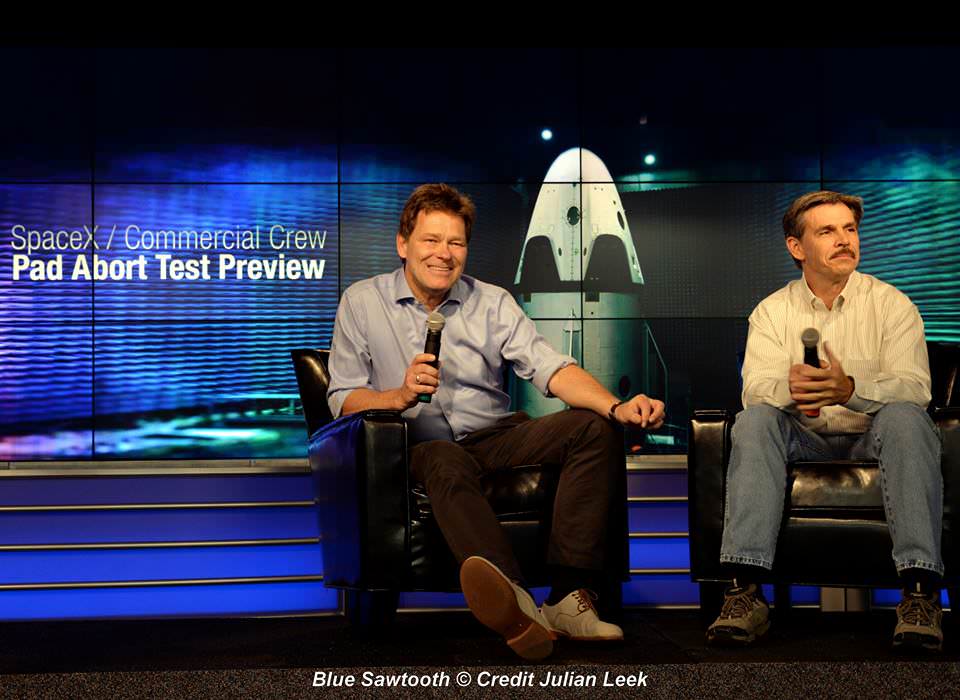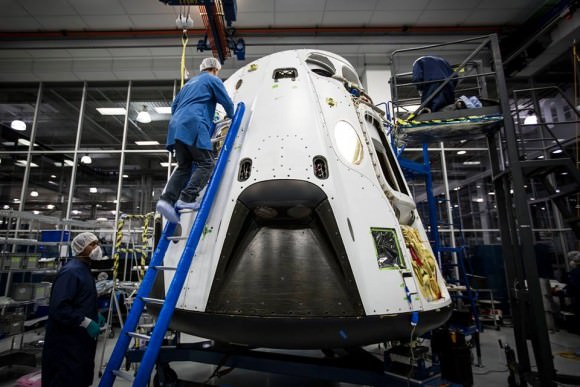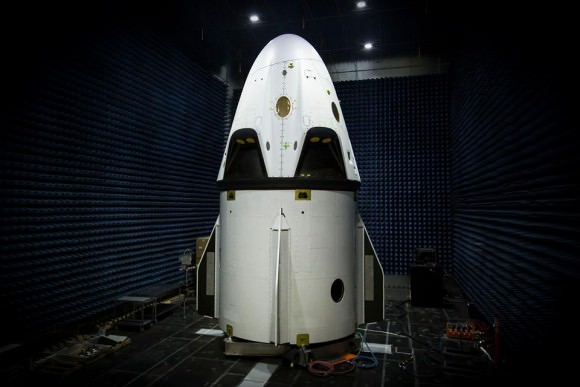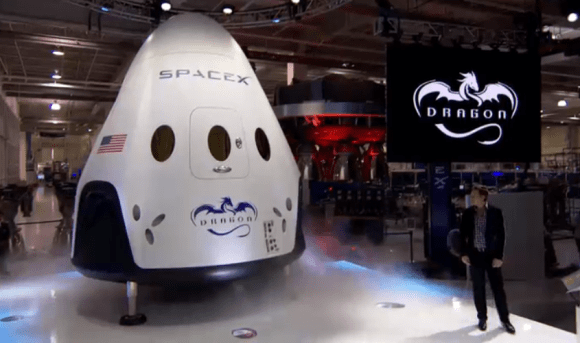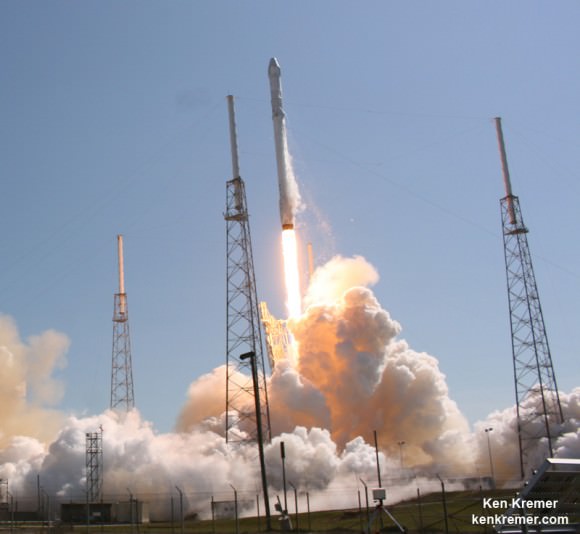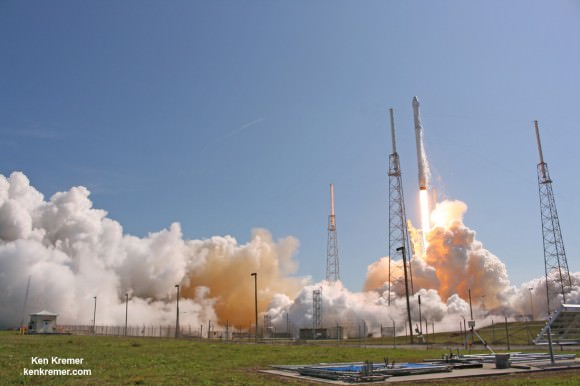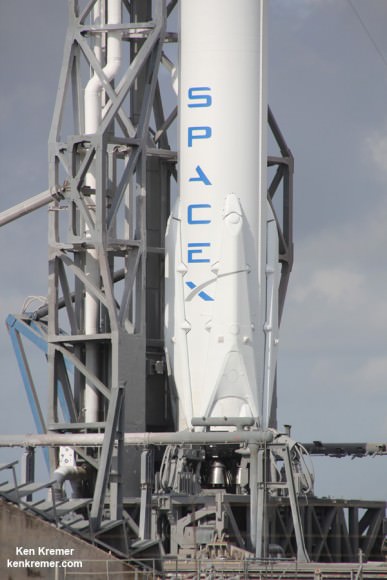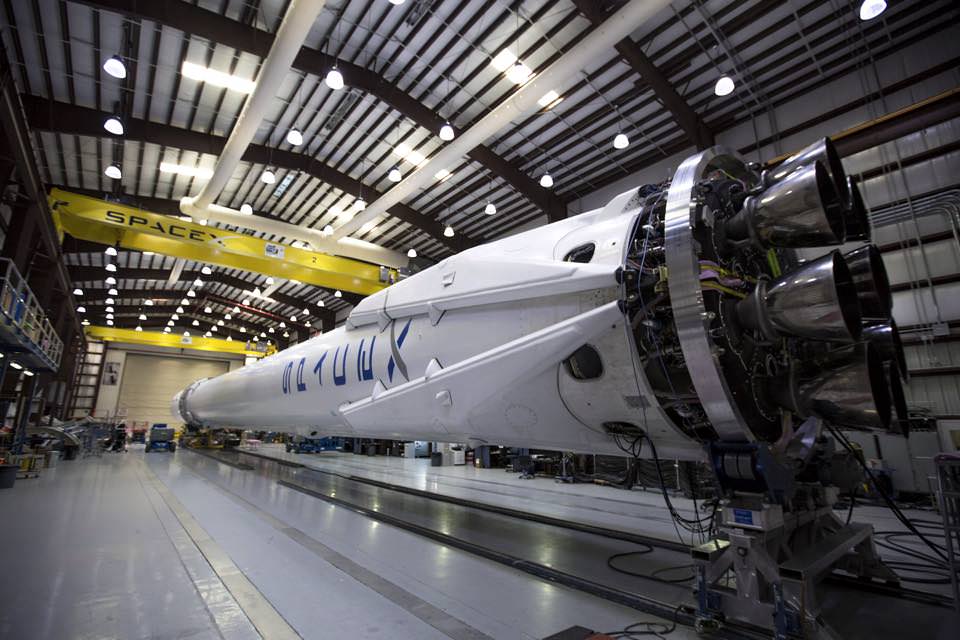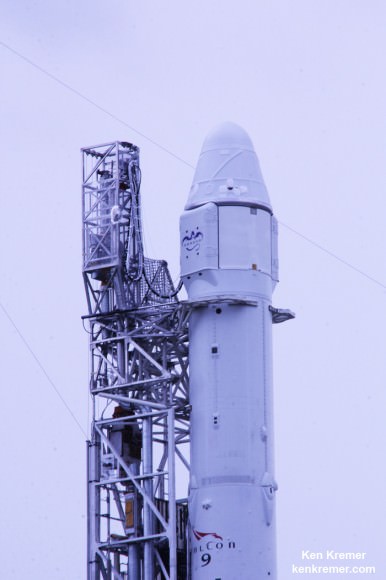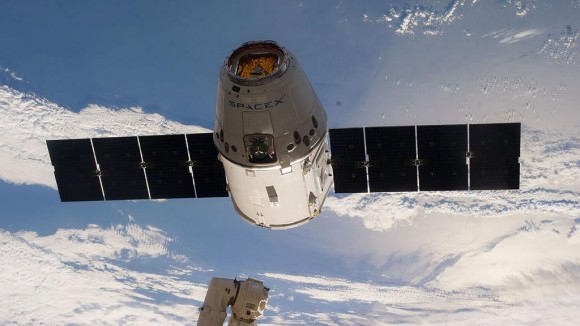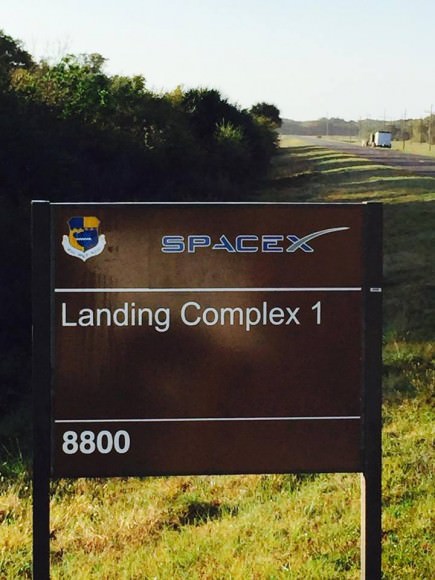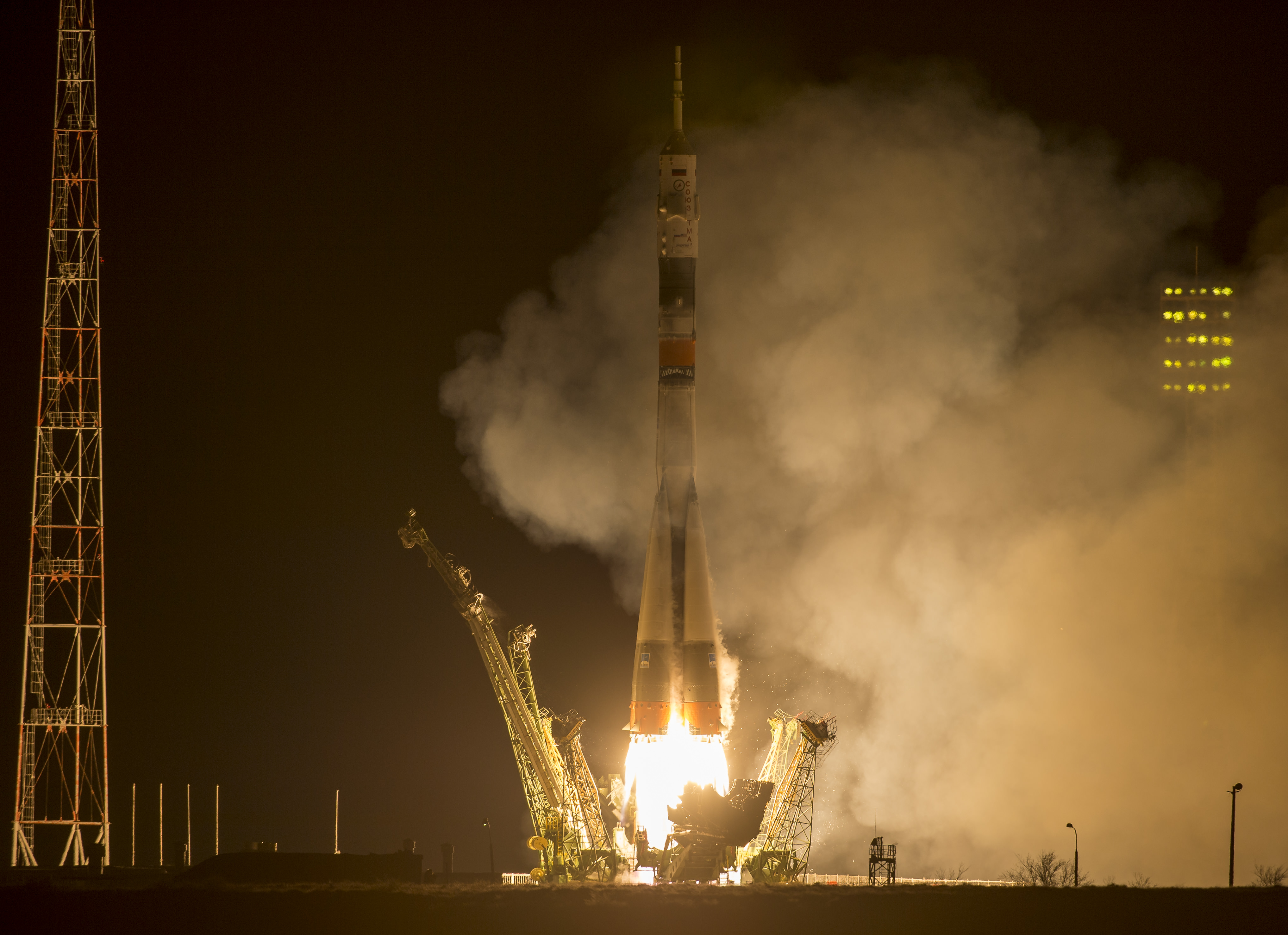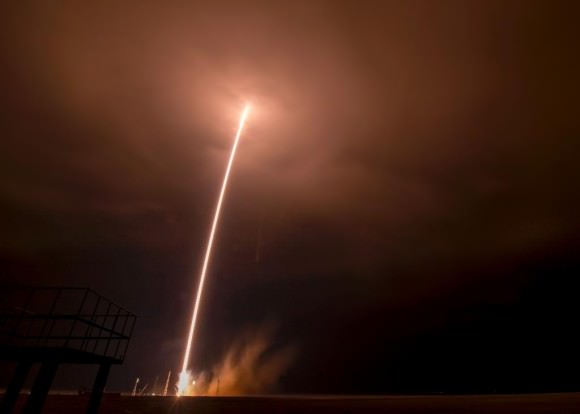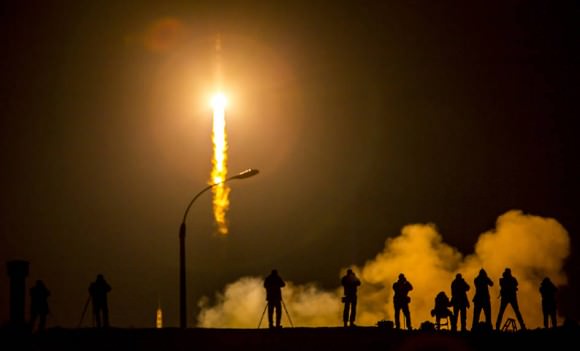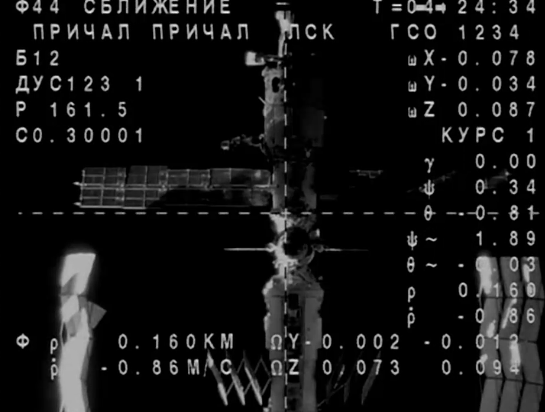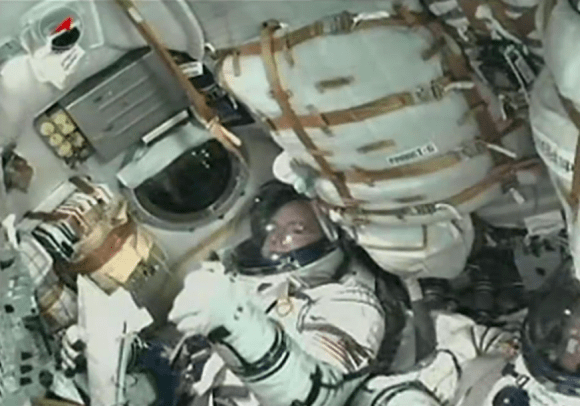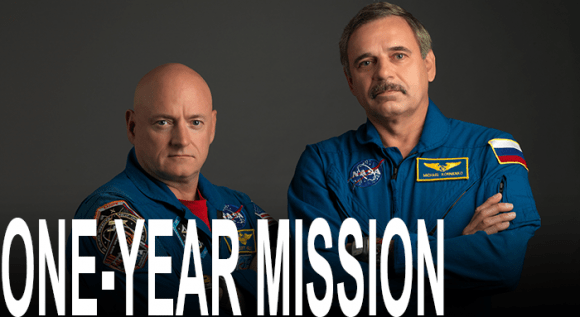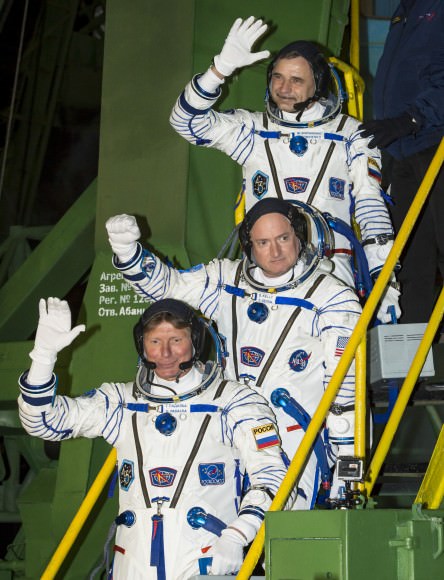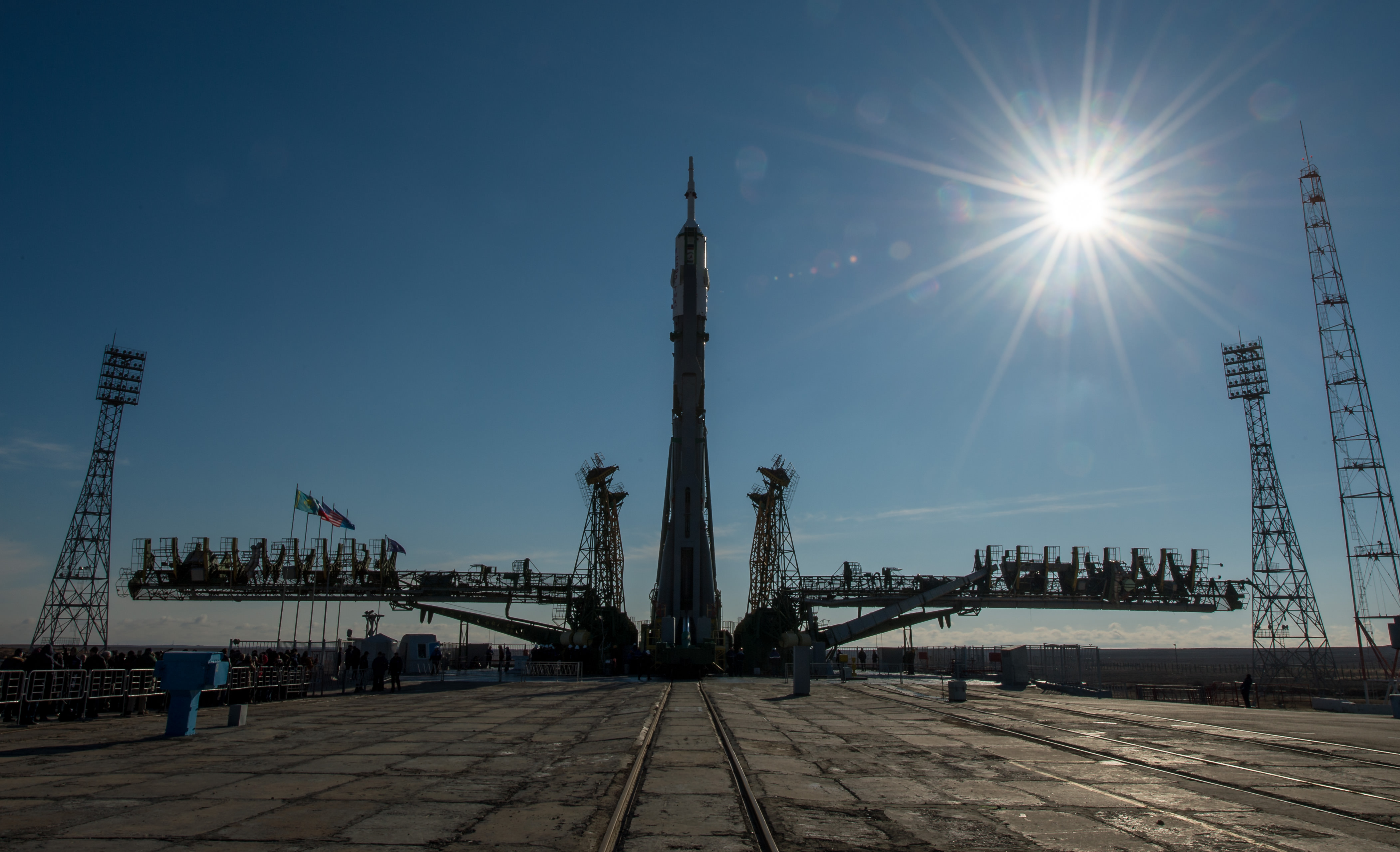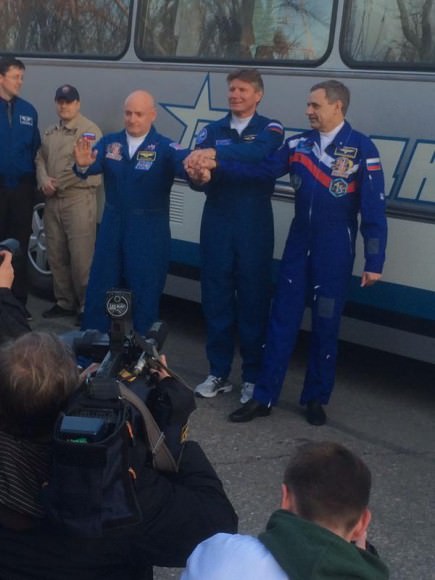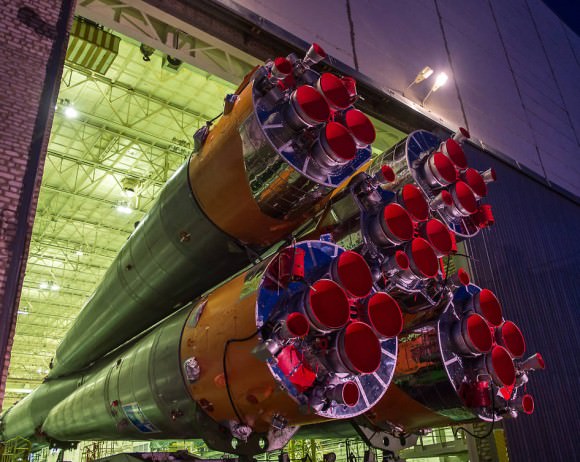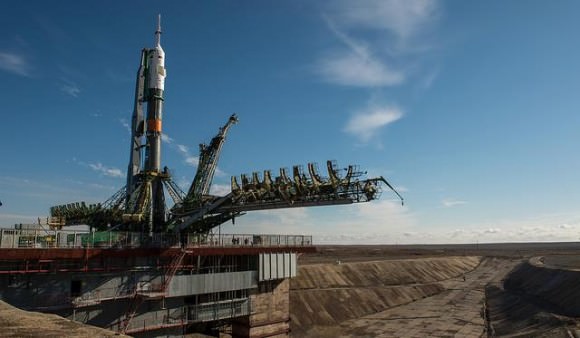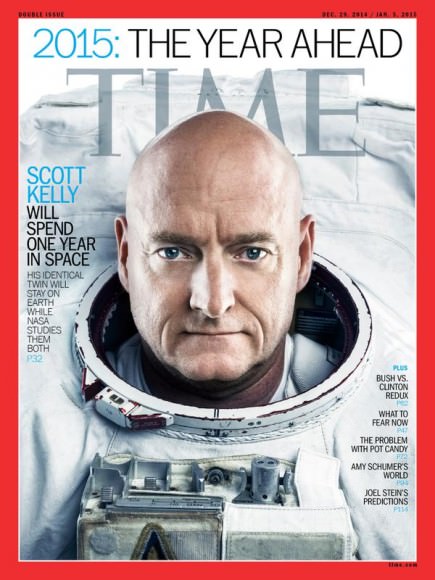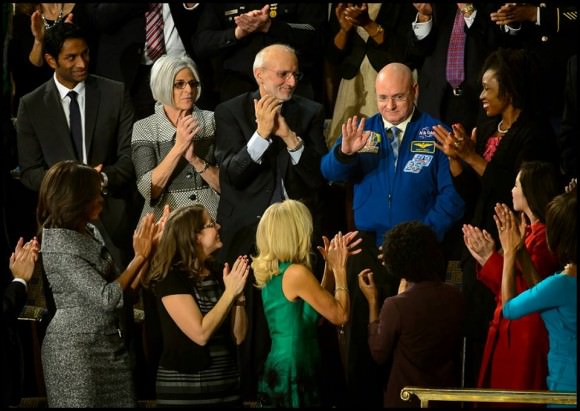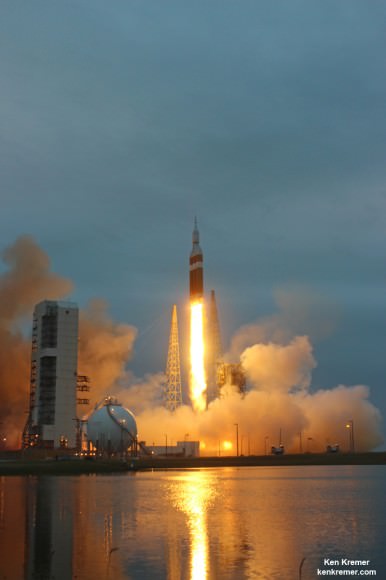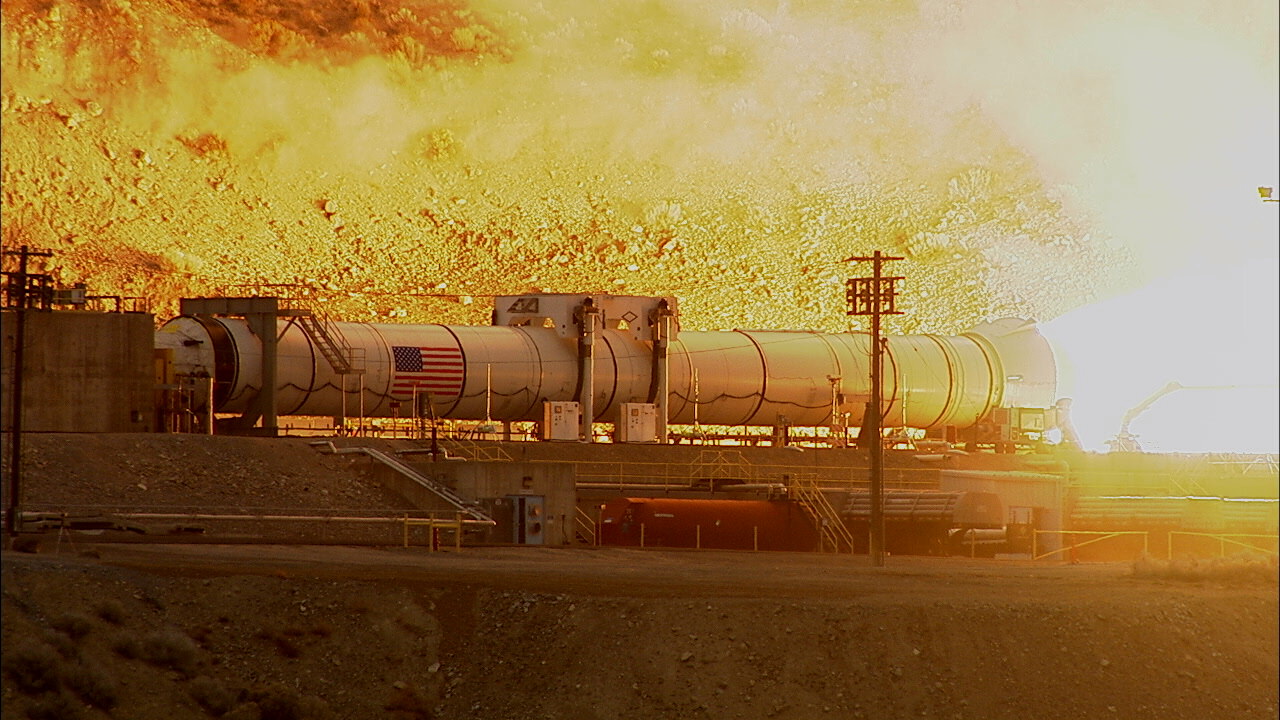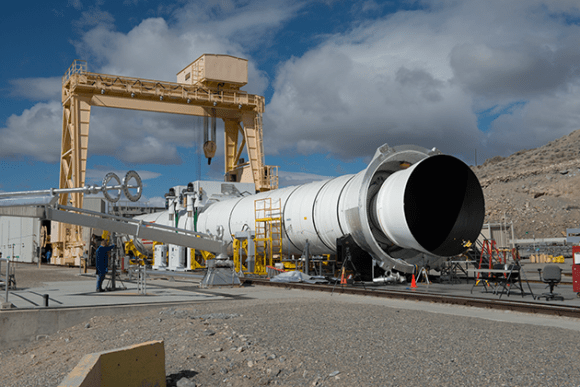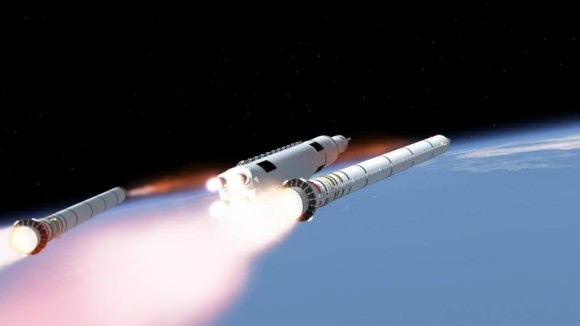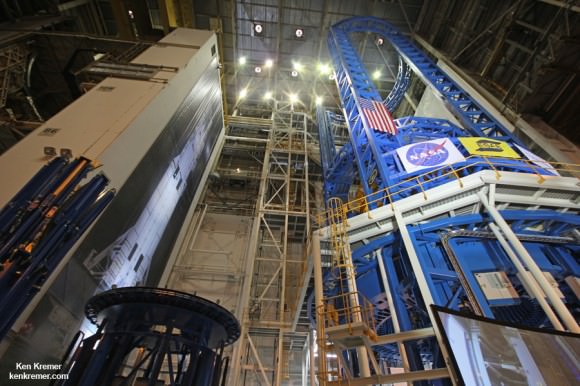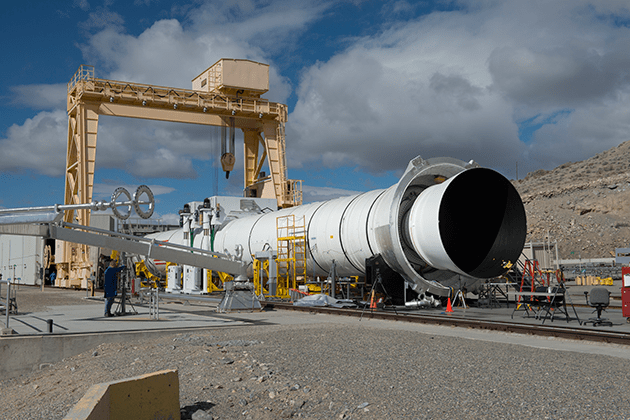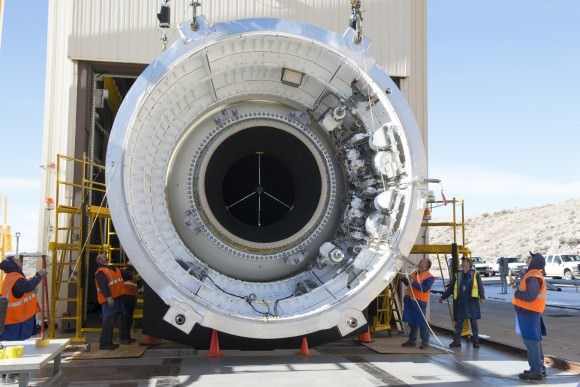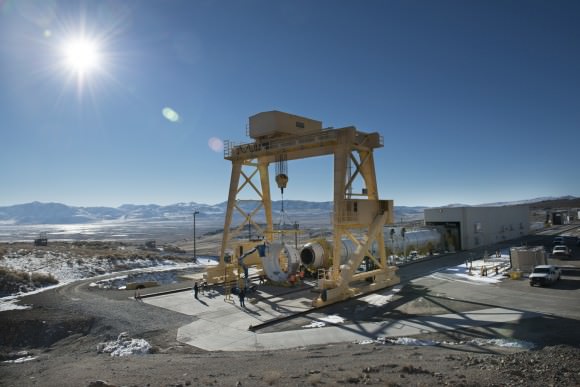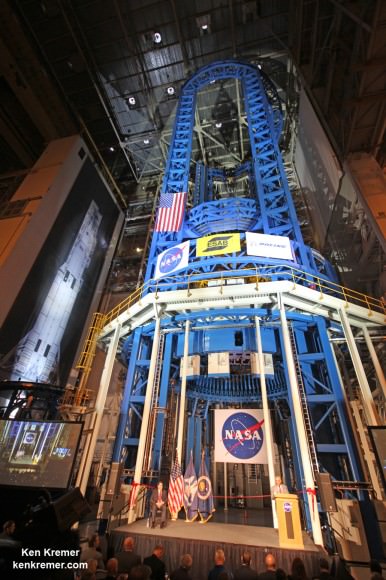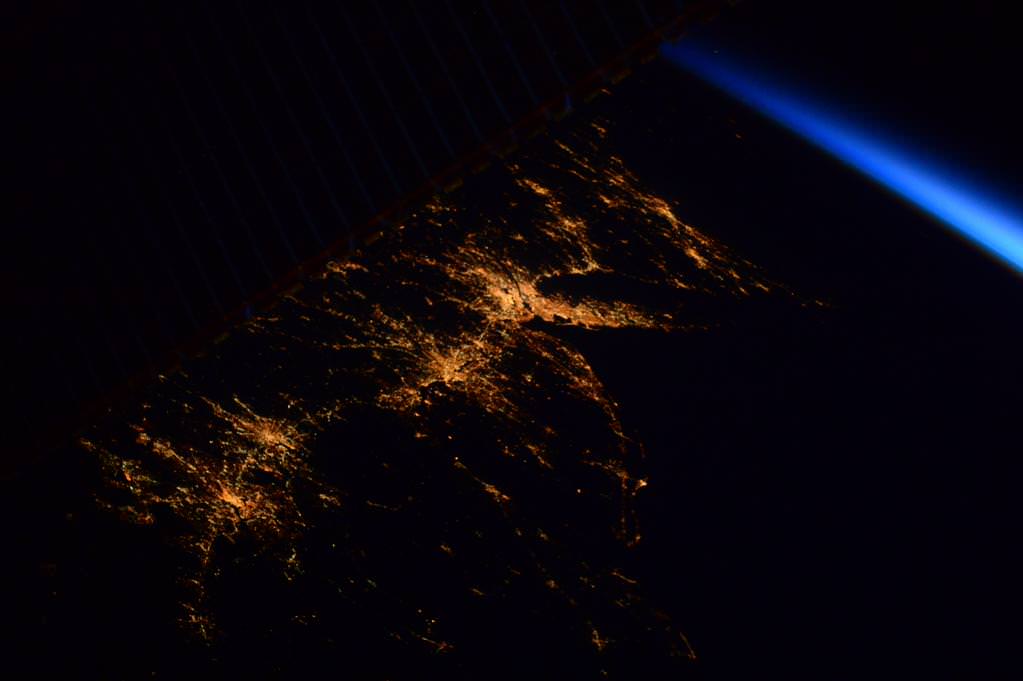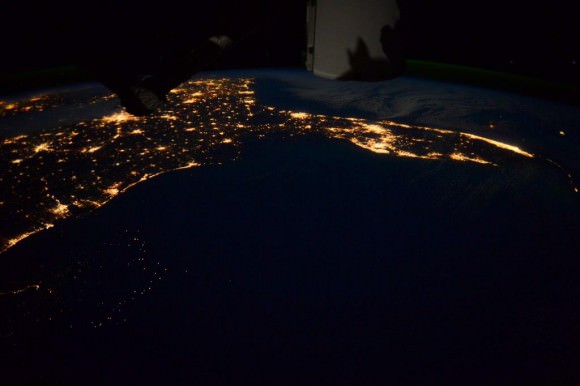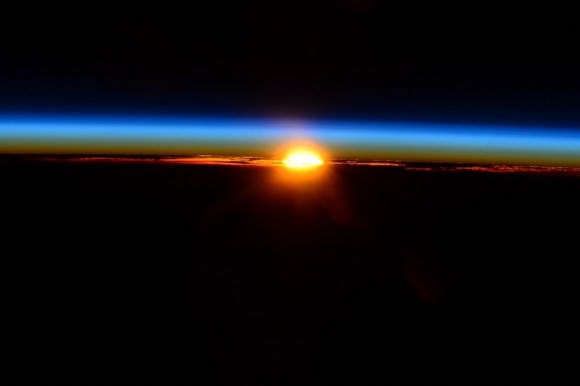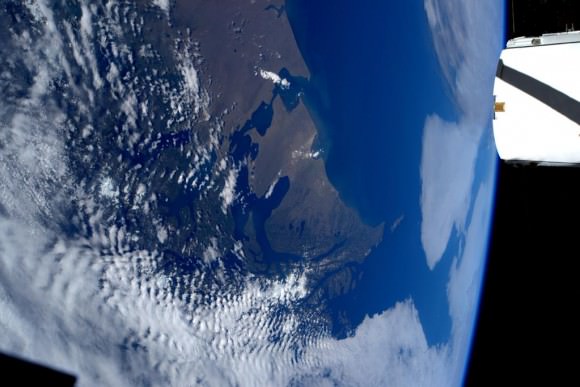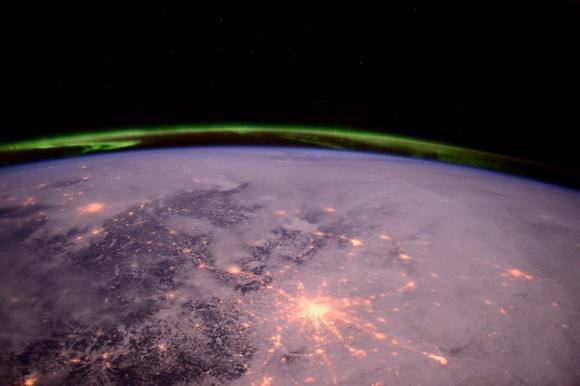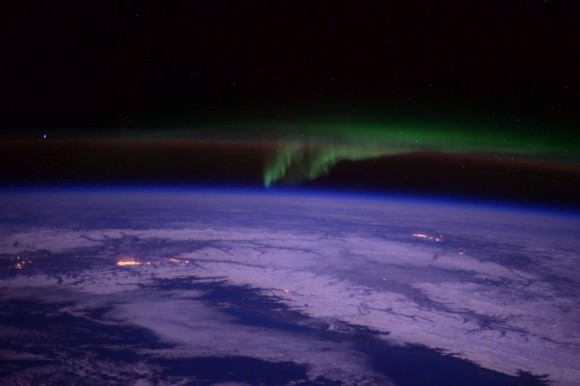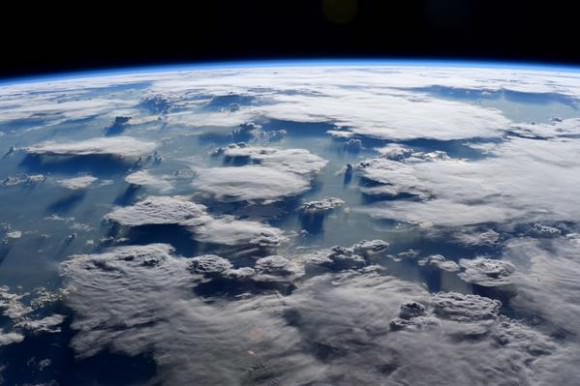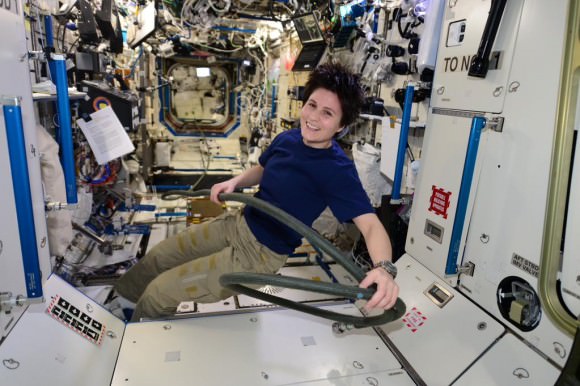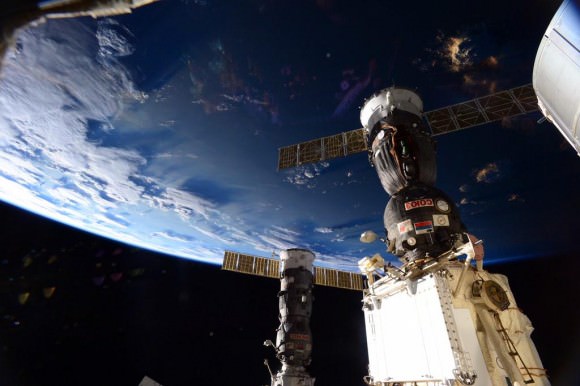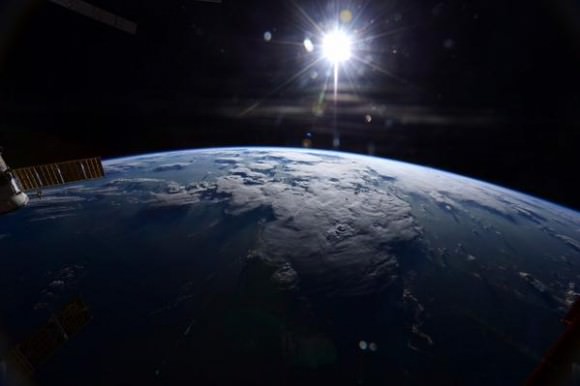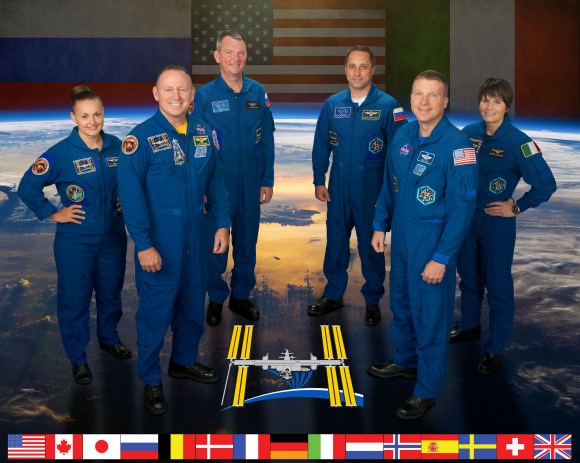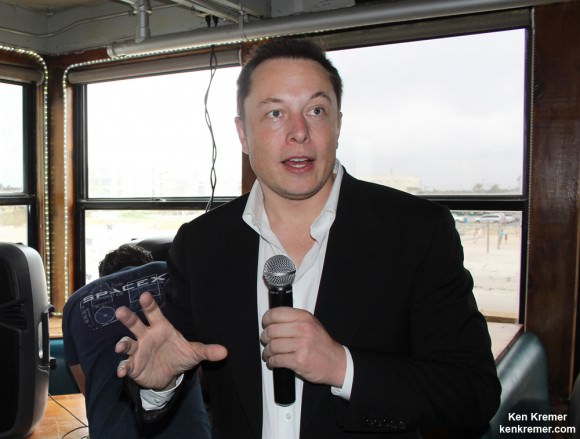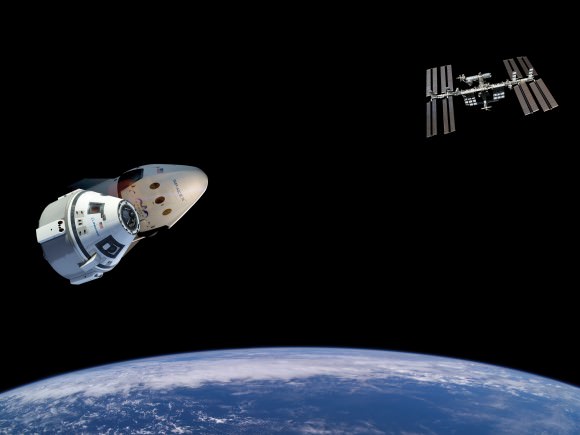Soaring on the power of an octet of SuperDrago engines, SpaceX successfully completed a critical rapid fire life-saving test of their Dragon crew capsules pad abort emergency escape system that would ignite in a split second to save the astronauts lives in the unlikely event of a failure of the Falcon 9 booster rocket at the Cape Canaveral launch pad.
The uncrewed SpaceX Crew Dragon roared swiftly skywards upon ignition of the test vehicle’s integrated SuperDraco engines at 9 a.m EDT this morning, Wednesday, May 6, for the mile high test conducted from the SpaceX Falcon 9 launch pad from a specially built platform at Space Launch Complex 40 (SLC-40) at Cape Canaveral Air Force Station, Florida.
A human-sized crash test dummy was seated inside for the test exercise which ended safely with a parachute assisted Atlantic Ocean splashdown after less than two minutes. There were no astronauts aboard.
The SuperDraco engines fired for approximately six seconds and accelerated the crew Dragon “from 0 to 100 mph in 1.2 seconds. It reached a top speed of about 345 mph,” said SpaceX CEO Elon Musk in a post test briefing.
“This bodes quite well for the future of the program. I don’t want to jinx it, but this is really quite a good indication for the future of Dragon.” said Elon Musk.
“We hope to launch the first crews to the ISS within about two years, plus or minus six months.”
The side mounted escape engines mark a revolutionary change from the traditional top mounted launch escape system used previously in the Mercury, Apollo, Soyuz and Orion human spaceflight capsules. The space shuttle had no escape system beyond ejections seats used on the first four flights.
Dragon was mounted atop the finned trunk section for the test. The entire Dragon/trunk assembly was about 20 feet (5 meters) tall.
The test is a critical milestone towards the timely development of the human rated Dragon that NASA is counting on to restore the US capability to launch astronauts from US soil abroad US rockets to the International Space Station (ISS) as early as 2017.
“This is a critical step toward ensuring crew safety for government and commercial endeavors in low-Earth orbit,” said Kathy Lueders, manager of NASA’s Commercial Crew Program.
“Congratulations to SpaceX on what appears to have been a successful test on the company’s road toward achieving NASA certification of the Crew Dragon spacecraft for missions to and from the International Space Station.”
Here is a video of the Pad Abort Test:
Video caption: Powered by its SuperDraco engines, the uncrewed SpaceX Crew Dragon flies through its paces in the Pad Abort Test from Cape Canaveral Air Force Station in Florida. Credit: NASA
After all the monomethylhydrazine and nitrogen tetroxide hypergolic propellants were consumed, Dragon soared as planned to an altitude of about 1500 meters (.93 mi) above the launch pad. At about T+21 seconds the trunk was jettisoned and the spacecraft began a slow rotation with its heat shield pointed toward the ground again as it arced out eastwards over the ocean.
The drogue chutes and trio of red and white main parachutes deployed as planned for a picturesque Dragon splashdown in the Atlantic Ocean about a mile offshore of its Cape Canaveral launch pad. The capsule was retrieved from the ocean by waiting recovery boats.
Today’s pad abort demonstration tested the ability of the set of eight SuperDraco engines integrated directly into the side walls of the crew Dragon to ignite simultaneously and pull the vehicle away from the launch pad in a split second – in a simulated emergency to save the astronauts lives in the event of a real emergency.
Therefore the Pad Abort Test did not include an actual Falcon 9 booster since it was focused on a checkout of the capsule’s escape capability.
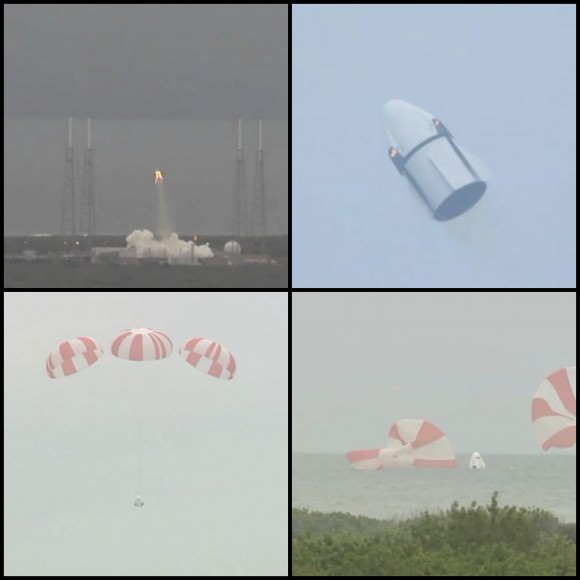
The SuperDraco engines are located in four jet packs built into the capsule around the base. Each engine produces about 15,000 pounds of thrust pounds of axial thrust, for a combined total thrust of about 120,000 pounds in under one second, to propel the astronauts safely away.
The entire test lasted less than two minutes.
The test was webcast live on NASA TV: http://www.nasa.gov/nasatv
The crew Dragon is outfitted with 270 sensors to measure a wide range of vehicle, engine, acceleration and abort test parameters.
The pad abort test was accomplished under SpaceX’s Commercial Crew Integrated Capability (CCiCap) agreement with NASA, that will eventually lead to certification of the Dragon for crewed missions to low Earth orbit and the ISS.
A second Dragon flight test follows later in the year, perhaps in the summer. It will launch from a SpaceX pad at Vandenberg Air Force Base in California and involves simulating an in flight emergency abort scenario during ascent at high altitude at maximum aerodynamic pressure (Max-Q) at about T plus 1 minute, to save astronauts lives.
The pusher abort thrusters would propel the capsule and crew safely away from a failing Falcon 9 booster for a parachute assisted splashdown into the ocean.
“This is what SpaceX was basically founded for, human spaceflight,” said Hans Koenigsmann, vice president of Mission Assurance with SpaceX, at a prelaunch briefing.
“The pad abort is going to show that we’ve developed a revolutionary system for the safety of the astronauts, and this test is going to show how it works. It’s our first big test on the Crew Dragon.”
Stay tuned here for Ken’s continuing Earth and planetary science and human spaceflight news.
